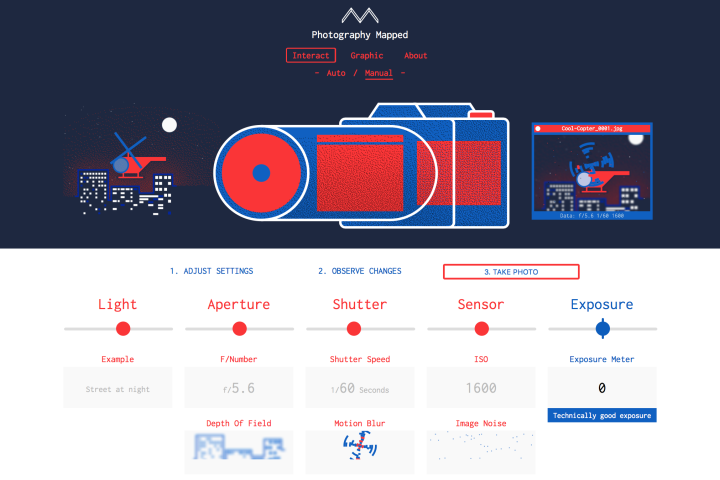
The animation allows web visitors to plug in different settings, take a “picture” and see how those different options affect not just how light or dark the image is, but things like motion blur, noise, and the level of out-of-focus blur known as depth of field.
The tool uses a simple scenario that allows all the different settings to have an obvious effect — taking a picture of a helicopter. Using the animated camera, turning the shutter speed up will freeze the chopper’s rotors, for example, while a slow shutter speed turns the sharp blades into a blur of motion. An exposure meter, much like the one inside digital cameras, shows users the effects that each change has, teaching new photographers how to balance out the exposure using the three different exposure settings.
The interactive tool also adjusts for something outside the camera — the level of light in the scene. From the sun on snow to the light of a half moon, the tool allows beginners to see how the scene’s light also impacts the final image.
Photography Mapped, which also includes an infographic explaining how cameras and manual modes work, is designed by London-based animator Simon Roberts. The designer, whose client list includes Yahoo, American Express and UNICEF, decided to build the web tool to reduce the steep learning curve after discovering that two thirds of non-professional DSLR owners don’t use manual mode.
“Metaphors are great, but if you can explain the thing itself well enough, you can remove a layer of abstraction,” Roberts wrote, referring to the confusion sometimes caused by the exposure triangle. “I’ve tried to show what’s happening so you can build up a simple mental picture about why various settings change your image, as much as what they do to your image.”
The interactive tool is free to use at the Photography Mapped website.




